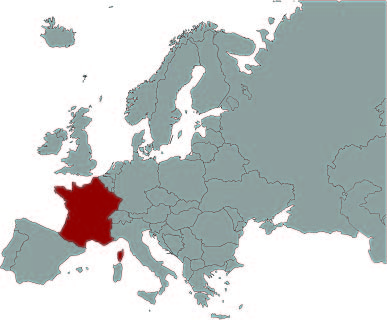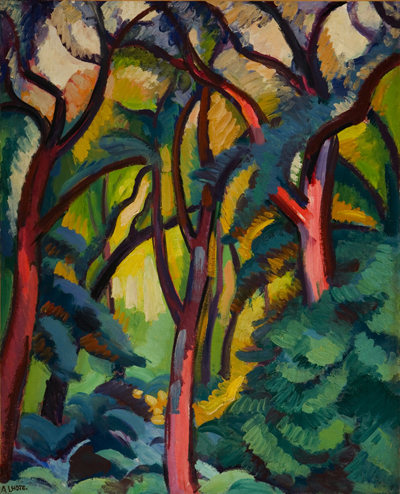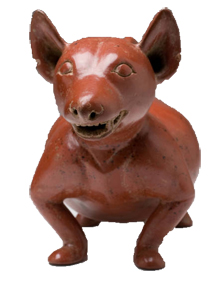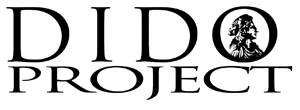

Some critics scorned this new style, and one even called the artists "Fauves" or "wild beasts." This style was at its height from 1905 to 1908, when many artists turned to Cubism's logic to escape the unruly emotions of the Fauves. For most artists, Fauvism was an experimental learning tool. Many of the Fauves, including André Lhote, painted in other styles as well.
André Lhote painted Under the Trees I (Sous Bois I) in 1906. He focused on a small thicket of trees instead of the larger landscapes seen in other Fauve paintings. Pink trees and blue bushes cover most of the canvas. Brushstrokes are easily seen in the thick paint, intensifying movement. Imagine what this painting would look like if it were depicted realistically. How does color choice affect your viewing of this scene?
1906
André Lhote, French (1885-1962)
28 3/4 inches H; 23 5/8 inches W
Gift of David T. Owsley
1997.024.001
1906 President Theodore Roosevelt is the first American awarded Nobel Peace Prize.
1919 Treaty of Versailles signed.
1941 National Gallery of Art opens in Washington, D.C.
1941 Bombing of Pearl Harbor.




